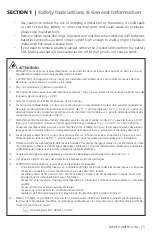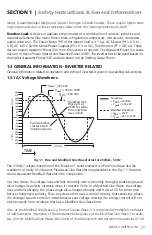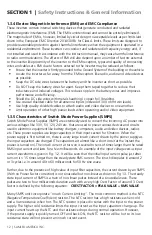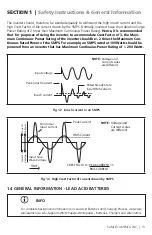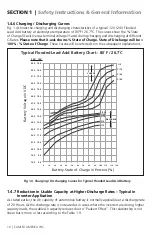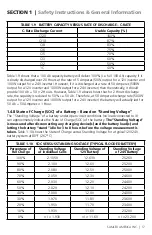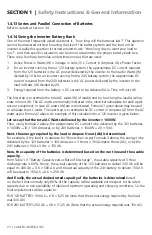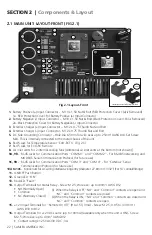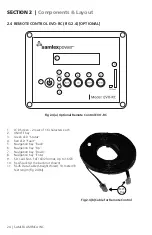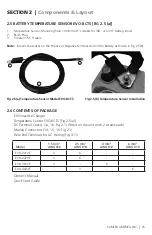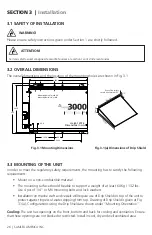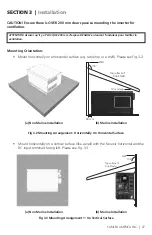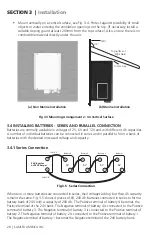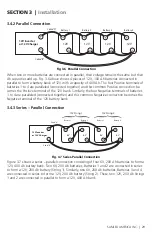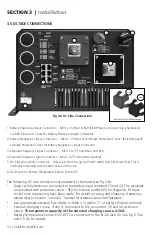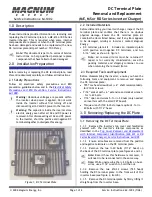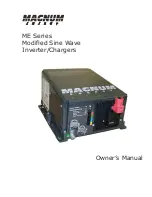
16 | SAMLEX AMErICA INC.
SAMLEX AMErICA INC. | 17
tAbLe 1.9 bAttery CAPACity VerSuS rAte oF DiSChArge – C-rAte
C-rate Discharge Current
usable Capacity (%)
C/20
100%
C/10
87%
C/8
83%
C/6
75%
C/5
70%
C/3
60%
C/2
50%
1C
40%
Table 1.9 shows that a 100 Ah capacity battery will deliver 100% (i.e. full 100 Ah) capacity if it
is slowly discharged over 20 Hours at the rate of 5 Amperes (50W output for a 12V inverter and
100W output for a 24V inverter). However, if it is discharged at a rate of 50 Amperes (500W
output for a 12V inverter and 1000W output for a 24V inverter) then theoretically, it should
provide 100 Ah ÷ 50 = 2 Hours. However, Table 1.9 above shows that for 2 Hours discharge
rate, the capacity is reduced to 50% i.e. 50 Ah. Therefore, at 50 Ampere discharge rate (500W
output for a 12V inverter and 1000W output for a 24V inverter) the battery will actually last for
50 Ah ÷ 50 Amperes = 1 Hour.
1.4.8 State of Charge (SoC) of a battery – based on “Standing Voltage”
The “Standing Voltage” of a battery under open circuit conditions (no load connected to it)
can approximately indicate the State of Charge (SOC) of the battery.
the “Standing Voltage”
is measured after disconnecting any charging device(s) and the battery load(s) and
letting the battery “stand” idle for 3 to 8 hours before the voltage measurement is
taken.
Table 1.10 shows the State of Charge versus Standing Voltage for a typical 12V/24V
battery system at 80°f (26.7ºC).
tAbLe 1.10 SoC VerSuS StAnDing VoLtAge (tyPiCAL FLooDeD bAttery)
Percentage of
Full Charge
Standing Voltage
of individual Cells
Standing Voltage of
12V battery
Standing Voltage
of 24V battery
100%
2.105V
12.63V
25.26V
90%
2.10V
12.6V
25.20V
80%
2.08V
12.5V
25.00V
70%
2.05V
12.3V
24.60V
60%
2.03V
12.2V
24.40V
50%
2.02V
12.1V
24.20V
40%
2.00V
12.0V
24.00V
30%
1.97V
11.8V
23.60V
20%
1.95V
11.7V
23.40V
10%
1.93V
11.6V
23.20V
0%
= / < 1.93V
= / < 11.6V
= / < 23.20V
SECTIOn 1 |
Safety Instructions & general Information



